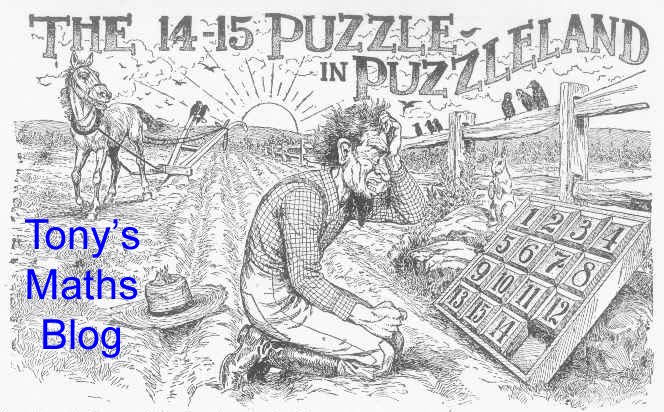Certainly one ought to attempt most mathematical puzzles for oneself, before looking at the solution. But I think there are some examples where one can admire the solution without attempting the puzzle oneself. One example might be the 100 prisoners problem - the solution is beautiful and I don't think that I would have gained anything by spending a long time thinking about the problem before looking it up. I don't feel too bad about looking up how to solve the 5x5x5 Rubik cube - I did work out how to solve the 3x3x3 one by myself (albeit almost 40 years ago: I might not be able to do that now) so I didn't feel that I had to prove anything to myself, and I felt that I had better things to do with my time. (On the other hand, the fact that I am writing this self-justifying post may suggest that I do feel some guilt about this!)
Anyway, here is one problem that is certainly in the "to be solved for oneself" category. It was knew to me: I came across it, surprisingly, in a literary novel - Ethan Canin's A Doubter's Almanac, one of the small category of novels in which the principal character is a Fields Medallist. (The only other one I can immediately think of is Peter Buwalda's Bonita Avenue - if you know of any others, please tell me!)
A mathematician buys a lottery ticket, choosing six different integers between 1 and 46. She (it's "he" in the book) chooses her numbers so that the sum of their base-ten logarithms is an integer. How many possible choices are there?
